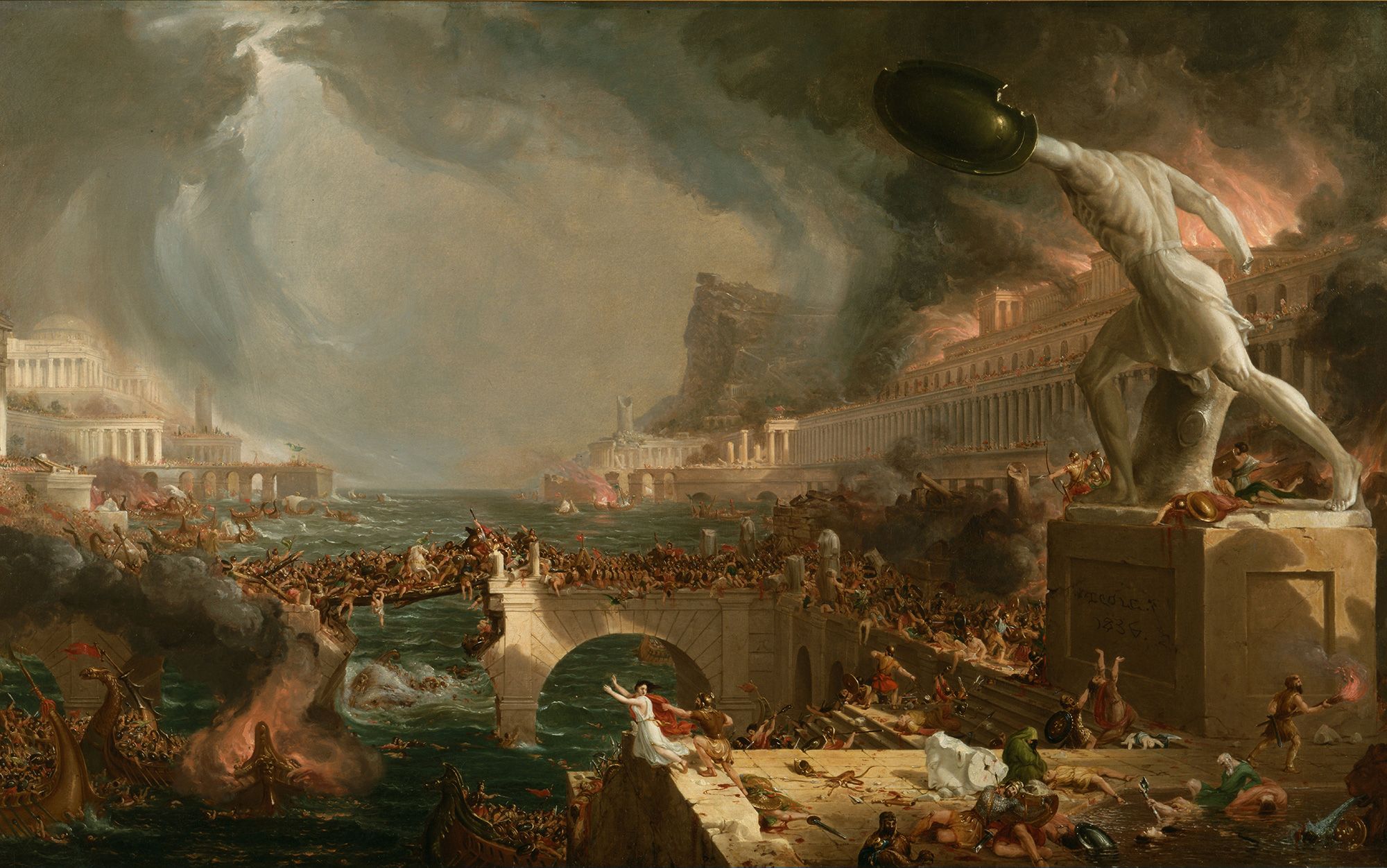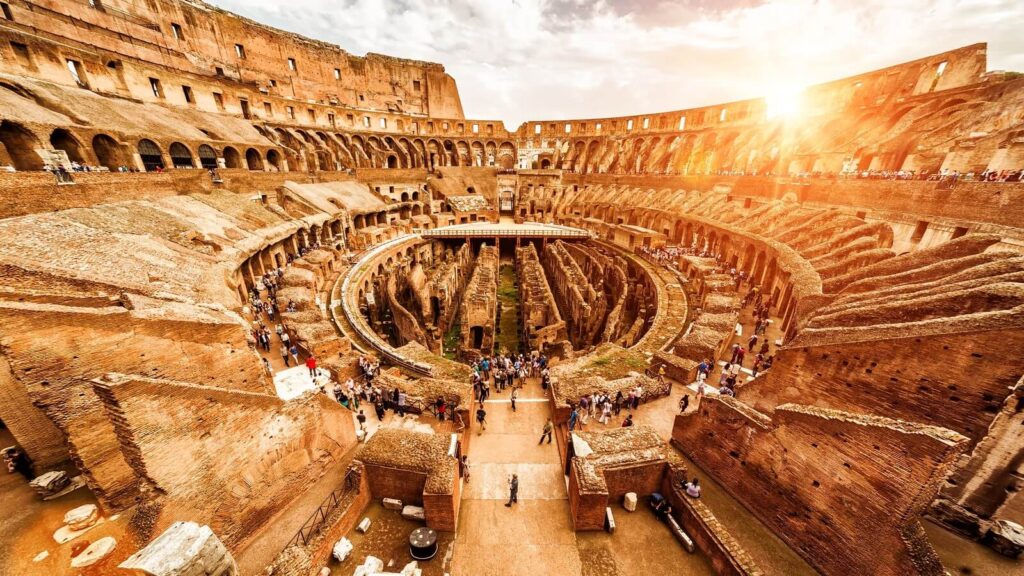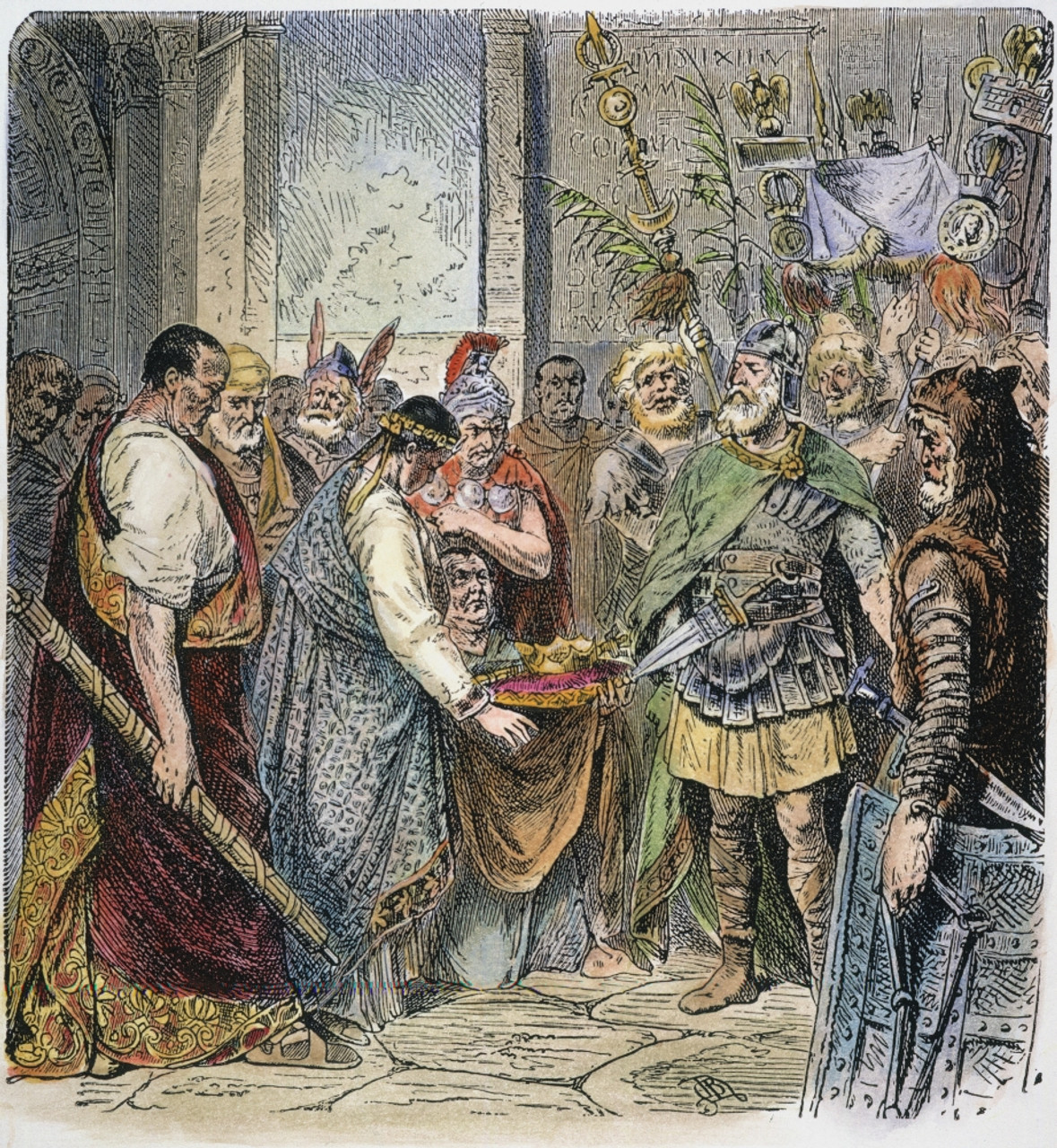The story of the Roman Empire is one of grandeur and ultimate decline. In this article, we will delve into the remarkable journey of the Roman Empire, from its humble beginnings to its eventual fall. We will explore the factors that contributed to its rise, the challenges it faced, and the enduring legacy it left behind.
The story of the Roman Empire is one of grandeur and ultimate decline. In this article, we will delve into the remarkable journey of the Roman Empire, from its humble beginnings to its eventual fall. We will explore the factors that contributed to its rise, the challenges it faced, and the enduring legacy it left behind.The Roman Empire began as a small settlement on the banks of the Tiber River. Legend has it that it was founded by twin brothers, Romulus and Remus, who were raised by a she-wolf.
The Birth of Rome

The tale of Rome begins in the 8th century BC when it was founded on the banks of the Tiber River. Legend has it that the city was founded by Romulus and Remus twin brothers raised by a she-wolf. Over time, Rome grew into a thriving city-state, eventually becoming a republic.
The origins of Rome are shrouded in myth and legend. According to Roman mythology, the city was founded by twin brothers Romulus and Remus who were abandoned as infants and nurtured by a she-wolf. This iconic story symbolizes the birth of a great civilisation and the indomitable spirit of its people. In its infancy Rome was a small village situated on the banks of the Tiber River. The strategic location provided fertile lands and access to trade routes laying the foundation for future prosperity.
Expansion and Conquest
Rome’s hunger for expansion was insatiable. The Roman legions conquered vast territories including Carthage and Gaul spreading their influence across the Mediterranean. This expansion brought immense wealth and power to Rome.Rome’s journey towards expansion began with its humble origins as a small settlement on the banks of the Tiber River. Over time it evolved into a republic, with a unique system of governance that emphasized the importance of law and citizenship.One of Rome’s defining characteristics was its formidable military.
The Roman legions disciplined and well-trained, played a pivotal role in the city’s expansion. Their conquests began with the Italian Peninsula gradually extending their dominion. The First Punic War marked Rome’s first step beyond Italy. It was a conflict between Rome and Carthage a powerful North African city-state. The war fought at sea and on land ended with Rome’s victory and the acquisition of Sicily.
The Roman Republic

The Roman Republic was characterized by a system of checks and balances with elected officials serving limited terms. However this system eventually succumbed to corruption and power struggles. The story of the Roman Republic begins with the overthrow of the monarchy in 509 BC. Romans weary of tyrannical rule established a new form of government, one where power would be shared.
The newly formed republic drafted a constitution that emphasized the separation of powers among different branches of government. This concept laid the foundation for a system of checks and balances. At the heart of the Roman Republic was the Senate, comprised of elders who provided wisdom and guidance to elected officials. They played a pivotal role in decision-making.
The Transition to an Empire

The transition from a republic to an empire was marked by the rise of Julius Caesar and his assassination. Octavian, later known as Augustus, became the first Roman Emperor establishing the Roman Empire.
Under the rule of Augustus and his successors, Rome experienced a period of relative peace and prosperity known as Pax Romana. During this time, the empire reached its zenith in terms of territorial expansion and cultural achievements.Julius Caesar a military genius and charismatic leader emerged as a central figure during this turbulent period.
In 49 BC Caesar famously crossed the Rubicon River defying the Roman Senate’s orders and sparking a civil war against his rival, Pompey. Mark Antony, and Lepidus formed the Second Triumvirate a political alliance to avenge Caesar’s
Economic and Social Dynamics

Rome’s economy thrived through trade and agriculture. The society was hierarchical, with a stark divide between the wealthy elite and the common people. At its zenith it encompassed vast territories, fostering a diverse economy that played a pivotal role in shaping its destiny. The Romans were pioneers in agricultural techniques, implementing innovations such as crop rotation and aqueducts to enhance productivity.
The cultivation of grains, particularly wheat, was central to their agricultural success. This surplus was pivotal for sustaining the burgeoning population. The majority of the population, the plebeians often faced economic hardships and lacked political influence. Slavery played a significant role in the Roman economy with slaves performing various tasks, from laboring in the fields to serving in households. The economic disparities within Roman society were stark. The wealthy elite enjoyed opulent lifestyles, with grand villas, extravagant banquets, and an array of servants.
Political Structure and Decline

As the empire grew its political structure became increasingly unwieldy. Corruption, political instability and ineffective leadership plagued the later years of the Roman Empire.The Roman Republic, established around 509 BC marked the birth of Rome’s political structure. The system was characterized by a delicate balance of power between various branches, including the Senate the popular assemblies and the executive officers known as consuls.The Senate composed of elder statesmen, played a pivotal role in shaping Roman policies and laws.
Their wisdom and experience guided the Republic during its formative years. The popular assemblies allowed Roman citizens to participate in the decision-making process. They had the power to elect officials and enact legislation. The Roman Republic eventually gave way to the Roman Empire marked by the rise of Julius Caesar and the subsequent emperors. This transition had profound implications for the empire’s political structure.
External Threats

External threats from barbarian invasions like the Visigoths and Huns added to Rome’s woes. The empire’s borders became porous and the once-mighty legions struggled to defend its vast territories. At the height of its power, the Roman Empire boasted an extensive and well-guarded frontier. However as time passed maintaining these borders became increasingly challenging.
The Visigoths a Germanic tribe, were among the first barbarian groups to breach Rome’s defenses. In the early 5th century their invasion marked the beginning of a series of external threats that would plague the empire for years to come. In 410 AD, Alaric the Visigoth famously sacked Rome. This event sent shockwaves through the empire and exposed its vulnerability to external threats. One of the most feared figures in history, Attila the Hun, emerged as a formidable adversary to the Roman Empire.
The Split and Decline

The Western Roman Empire faced more significant challenges with its capital in decline. The Roman Empire, at its zenith, spanned three continents, boasting vast territories and diverse cultures under its rule.A hierarchical system, efficient governance, and a well-organized military were the pillars of Roman rule.
In the year 285 AD Emperor Diocletian divided the Roman Empire into two distinct entities the Eastern Roman Empire and the Western Roman Empire. Diocletian’s administrative reforms aimed to cope with the empire’s vastness and increase efficiency. Constantine the Great, a pivotal figure, further solidified the division by establishing Constantinople as the Eastern capital. Invasions by barbarian tribes, including the Visigoths and Vandals put immense pressure on the Western Roman Empire.
The Fall of Rome

In 476 AD, the Western Roman Empire finally fell to the Germanic chieftain Odoacer. The once-mighty Rome was no more, but the Eastern Roman Empire known as the Byzantine Empire endured for centuries. Before we explore its decline, let’s first bask in the glory that was Rome. The Roman Empire was a beacon of civilization encompassing vast territories, sophisticated infrastructure, and rich culture.One of the primary factors contributing to Rome’s fall was political corruption. As emperors became increasingly autocratic corruption seeped into every facet of governance.
This weakened the empire’s ability to make sound decisions. The Roman economy faced severe challenges. High taxation, rampant inflation, and the devaluation of currency left the population impoverished and unable to sustain the empire’s financial needs. The Western Roman Empire faced relentless attacks from various barbarian tribes. Vandals, Visigoths, and Huns posed significant threats, exploiting Rome’s weakened state.
Legacy of the Roman Empire

The legacy of the Roman Empire is profound. It shaped Western civilization, leaving behind a rich cultural heritage, legal systems, and architectural marvels. The Roman Republic laid the groundwork for modern democratic systems. It introduced concepts like the separation of powers representation and the rule of law, which continue to shape modern governance.
The Romans gifted the world a language that evolved into modern-day Italian, French, Spanish, Portuguese, and Romanian. Latin, the language of scholars and poets has left an indelible mark on the linguistic landscape.The works of Virgil, Cicero, and Ovid remain influential in literature and philosophy. The Colosseum an amphitheater that could hold up to 80,000 spectators, remains an emblem of Roman engineering prowess. It hosted gladiatorial contests, chariot races, and theatrical performances.
Summary
The rise and fall of the Roman Empire serve as a cautionary tale in history. Its achievements and failures remind us of the complexities of human civilization and the consequences of unchecked power.
FAQs
1. What were the key factors in the rise of the Roman Empire?
The Roman Empire’s rise was attributed to factors like military conquests, a strong economy, and political stability.
2. How did the Roman Republic transition into an empire?
The transition occurred due to the rise of Julius Caesar and the subsequent reign of Augustus, who became the first Roman Emperor.
3. What is the significance of Pax Romana?
Pax Romana was a period of peace and prosperity that allowed the Roman Empire to flourish culturally and economically.
4. What were the major external threats to the Roman Empire?
Barbarian invasions, such as those by the Visigoths and Huns, posed significant threats to the empire’s security.
5. What is the lasting legacy of the Roman Empire?
The Roman Empire’s legacy includes its influence on law, architecture, and the development of Western civilization.
